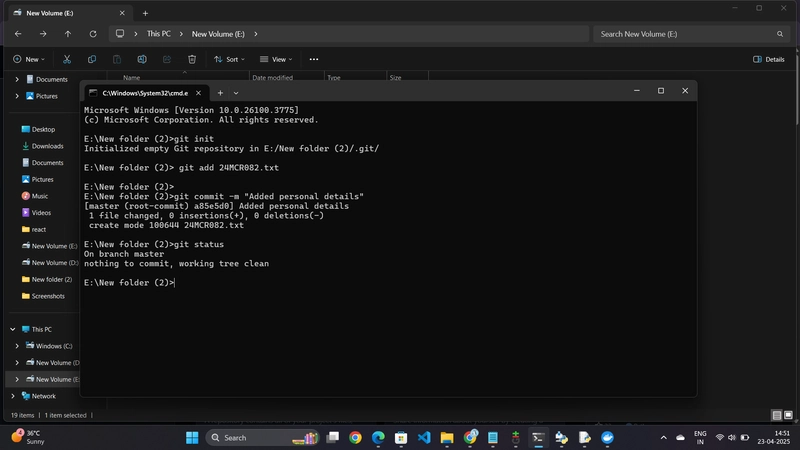Instagram System Design: How It Actually Works
Summary: In the context of modern social media app architecture, Instagram best epitomizes the focus on scalability and user personalization. This article analyzes the Reels recommendation system of the platform to make sense of the intersection between engineering excellence and user satisfaction. This article decodes Instagram's system design to develop a successful app that stands strong in the test of time. Introduction Decoding how Instagram works reveals how its well-crafted system design powers one of the world’s most popular platforms. Its architecture facilitates features such as stories, reels, and live streams while making sure of a smooth user experience for billions. Comprehending its data flow, recommendation algorithms, and overall scalability can be helpful for businesses and developers who want to build an app like Instagram. Let’s Decode Instagram's Design System Instagram's system design is an example of the perfect combination of innovation and scalability. The system design is specially optimized to meet the needs of its huge user base and diverse content. The architecture is a fine amalgamation of advanced frontend and backend solutions with an efficient Content Delivery Network. This ensures the smooth performance of the app. Frontend Architecture Mobile Applications Instagram's key interface is its mobile app on iOS and Android. The interaction with backend services occurs through REST APIs. This makes sure of smooth interaction. Web Interface This means users can access the core functionality of Instagram using their browsers, thereby enhancing the reach and accessibility of the application. Backend Services and Data Storage Evolution of Architecture: Instagram started with a monolithic setup that used Python's Django framework, which allowed rapid app development. As the demands of users increased, it evolved into a microservices architecture for better scalability and maintainability. Microservices pay attention to certain features such as user authentication and media management. Data Storage Solutions PostgreSQL Initially used to store user data, this provided consistency but was less scalable. Cassandra Apache Cassandra is adopted by Instagram to manage a huge volume of data, thereby benefiting from high availability and horizontal scalability. Cassandra clusters across different regions provide low latency and data locality. Content Delivery and Optimization Media Storage: Images and videos are stored in cloud solutions like Amazon S3. Pre-signed URLs enable users to upload media directly, minimizing server load. Caching Layer: Memcached serves as a caching layer, storing frequently accessed data in memory to reduce database load and improve responsiveness. When the responsive social media app architecture is combined with scalable backend services, Instagram showcases what it takes to build an app of this magnitude. This innovative blend helps the app maintain its status as one of the top social media platforms globally. How Instagram Reels Algorithm Rank Content This algorithm of Instagram Reel is carefully designed to come up with highly engaging and entertaining content for each user. Its primary objective is to boost user engagement by aligning reel recommendations with user preferences and increasing visibility for small creators. Key Ranking Factor User Activity Signals such as likes, shares, and comments are used by the algorithm to predict what kind of Reels the users might find interesting and appealing. Interaction History Past interactions with certain creators or categories of content are guiding Instagram to personalize its recommendations. Reel Information The elements of trending audio, visuals, captions, and overall popularity of the reel are crucial in its discoverability. Creator Information Instagram takes into account the creator's profile and reach to ensure fairness in giving opportunities to existing as well as new creators to connect with their audiences. Instagram strictly follows these factors to maximize user satisfaction and position Instagram Reels as a main driver of engagement. As a result of this, Instagram spurred users to create and interact with dynamic and creative content. Key Features of Instagram's Recommendation System Instagram's recommendation system ranks the massive volume of pictures and videos uploaded daily based on various signals and data. An AI-driven system evaluates user activity, interaction history, content details, and creator information to provide recommendations to each user. Engagement markers, such as likes and comments, are used by Instagram to predict content relevance. Further, the system considers the visual and audio content of Reels and also the popularity of creators so that diverse content is shown. These fe

Summary: In the context of modern social media app architecture, Instagram best epitomizes the focus on scalability and user personalization. This article analyzes the Reels recommendation system of the platform to make sense of the intersection between engineering excellence and user satisfaction. This article decodes Instagram's system design to develop a successful app that stands strong in the test of time.
Introduction
Decoding how Instagram works reveals how its well-crafted system design powers one of the world’s most popular platforms. Its architecture facilitates features such as stories, reels, and live streams while making sure of a smooth user experience for billions. Comprehending its data flow, recommendation algorithms, and overall scalability can be helpful for businesses and developers who want to build an app like Instagram.
Let’s Decode Instagram's Design System
Instagram's system design is an example of the perfect combination of innovation and scalability. The system design is specially optimized to meet the needs of its huge user base and diverse content. The architecture is a fine amalgamation of advanced frontend and backend solutions with an efficient Content Delivery Network. This ensures the smooth performance of the app.
Frontend Architecture
Mobile Applications
Instagram's key interface is its mobile app on iOS and Android. The interaction with backend services occurs through REST APIs. This makes sure of smooth interaction.
Web Interface
This means users can access the core functionality of Instagram using their browsers, thereby enhancing the reach and accessibility of the application.
Backend Services and Data Storage
Evolution of Architecture: Instagram started with a monolithic setup that used Python's Django framework, which allowed rapid app development. As the demands of users increased, it evolved into a microservices architecture for better scalability and maintainability. Microservices pay attention to certain features such as user authentication and media management.
Data Storage Solutions
PostgreSQL
Initially used to store user data, this provided consistency but was less scalable.
Cassandra
Apache Cassandra is adopted by Instagram to manage a huge volume of data, thereby benefiting from high availability and horizontal scalability. Cassandra clusters across different regions provide low latency and data locality.
Content Delivery and Optimization
Media Storage: Images and videos are stored in cloud solutions like Amazon S3. Pre-signed URLs enable users to upload media directly, minimizing server load.
Caching Layer: Memcached serves as a caching layer, storing frequently accessed data in memory to reduce database load and improve responsiveness.
When the responsive social media app architecture is combined with scalable backend services, Instagram showcases what it takes to build an app of this magnitude. This innovative blend helps the app maintain its status as one of the top social media platforms globally.
How Instagram Reels Algorithm Rank Content
This algorithm of Instagram Reel is carefully designed to come up with highly engaging and entertaining content for each user. Its primary objective is to boost user engagement by aligning reel recommendations with user preferences and increasing visibility for small creators.
Key Ranking Factor
User Activity
Signals such as likes, shares, and comments are used by the algorithm to predict what kind of Reels the users might find interesting and appealing.
Interaction History
Past interactions with certain creators or categories of content are guiding Instagram to personalize its recommendations.
Reel Information
The elements of trending audio, visuals, captions, and overall popularity of the reel are crucial in its discoverability.
Creator Information
Instagram takes into account the creator's profile and reach to ensure fairness in giving opportunities to existing as well as new creators to connect with their audiences.
Instagram strictly follows these factors to maximize user satisfaction and position Instagram Reels as a main driver of engagement. As a result of this, Instagram spurred users to create and interact with dynamic and creative content.
Key Features of Instagram's Recommendation System
Instagram's recommendation system ranks the massive volume of pictures and videos uploaded daily based on various signals and data. An AI-driven system evaluates user activity, interaction history, content details, and creator information to provide recommendations to each user. Engagement markers, such as likes and comments, are used by Instagram to predict content relevance.
Further, the system considers the visual and audio content of Reels and also the popularity of creators so that diverse content is shown. These features create a more engaging and tailored experience, making Instagram's recommendations unique and dynamic.
Removal of Abusive Content
Abusive content, whether racist, homophobic, or any other form of harm, has a huge impact on people and communities. Instagram addresses this problem with a strong system that helps users handle and control abusive or misleading content. With the right use of advanced AI technology, Instagram's algorithm detects such content by analyzing video frames and audio, filtering out most abusive material before it reaches the user.
In addition to this automated detection, users can report or block accounts that post harmful content. When a user blocks or reports someone, the Instagram AI recommendation system immediately takes action based on these reports. Instagram also enforces strict harassment policies, ensuring that users who engage in abusive behavior or persistently contact others with offensive material face consequences, further promoting a safer, more respectful environment for all.
Cold-start problem
The cold-start problem is one of the major issues that AI recommendation systems face, where new users have little data or history to recommend relevant content.
Instagram's recommendation system takes two approaches to solve this issue. For users with sparse engagement, the algorithm looks into their one-hop and two-hop connections, taking into account the accounts followed by the user and the followers of the user. This helps generate relevant content even when the activity is limited. For new users, Instagram first starts with trending media, then further refines its suggestions with the user's first interactions so that it gets more personal as the user engages.
Avoiding Content Repetition
The biggest challenge of Instagram's AI recommendation system is content repetition, which gives a monotonous feel to the user.
For this reason, Instagram has developed a system that makes sure not to repeatedly suggest the same videos using the same audio or the same creator.
To further ensure the diversity of content, the algorithm incorporates categories ranging from food to destinations and culture to different parts of the world. This further enriches the user's experience so that it doesn't stagnate. For users seeking variety, Instagram recommends resetting the feed periodically to avoid repetitive content. This ensures that each interaction with the app remains fresh and engaging, enhancing the overall quality of the user experience.
Conclusion
The success story of Instagram is a tribute to innovative engineering and the highly optimized architecture of a social media application. From a seamless browse to delivering accurate, engaging recommendations on Reels, the app is one of the few in its class. Dedicated developers who are looking to find inspiration for their next big project or improve current systems will find many lessons through the design and architecture of Instagram.




































































![New iPhone 17 Dummy Models Surface in Black and White [Images]](https://www.iclarified.com/images/news/97106/97106/97106-640.jpg)


![Mike Rockwell is Overhauling Siri's Leadership Team [Report]](https://www.iclarified.com/images/news/97096/97096/97096-640.jpg)











































































































_Wavebreakmedia_Ltd_FUS1507-1_Alamy.jpg?width=1280&auto=webp&quality=80&disable=upscale#)






















































































![[The AI Show Episode 144]: ChatGPT’s New Memory, Shopify CEO’s Leaked “AI First” Memo, Google Cloud Next Releases, o3 and o4-mini Coming Soon & Llama 4’s Rocky Launch](https://www.marketingaiinstitute.com/hubfs/ep%20144%20cover.png)






















































































































![Did I Discover A New Programming Paradigm? [closed]](https://miro.medium.com/v2/resize:fit:1200/format:webp/1*nKR2930riHA4VC7dLwIuxA.gif)














































-Classic-Nintendo-GameCube-games-are-coming-to-Nintendo-Switch-2!-00-00-13.png?width=1920&height=1920&fit=bounds&quality=70&format=jpg&auto=webp#)




































































